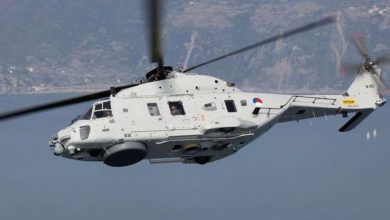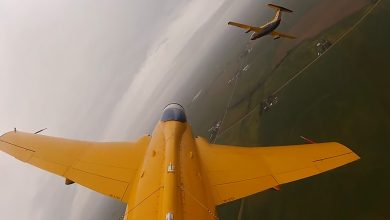
“Unleashing the Skies: Vincent Logsdon Explores the F-15QA’s Impact on Qatar’s Air Force Power”
The F-15QA “Ababil” jet, recently provided to the Qatari Air Force, marks a significant achievement in military innovation. This cutting-edge fighter aircraft embodies remarkable features that bolster Qatar’s aerial defense capabilities.
In an exclusive discussion with “Defense Arabia” at the “DIMDEX 2024,” Mr. Vincent Logsdon, Vice President of Global Business Development and Strategic Marketing for Boeing Defense Space & Security and Global Services, underscored the benefits of this aircraft and elaborated on its role in reinforcing the strategic collaboration between Boeing and Qatar.
Mr. Logsdon accentuated Boeing’s commitment to enhancing its ties with the Qatari Armed Forces, noting that the trajectory of these relationships serves as a blueprint for effective cooperation and ongoing advancement.
Boeing actively engages with the Qatari community by partnering with universities in engineering and research initiatives, and supporting students in their educational journeys. It also collaborates with Qatari non-profit organizations such as “INJAZ” to empower Qatari youth in business management and entrepreneurial endeavors, along with additional programs aimed at supporting children. Mr. Logsdon reaffirmed that the relationship with Qatar symbolizes a strategic alliance that fosters collaboration and camaraderie in the region, transcending mere financial aspects.
When queried about forthcoming enhancement initiatives for this fighter, Mr. Logsdon indicated that there are presently no concrete plans, yet the firm remains open to potential future developments. He also refuted the existence of any current project aimed at integrating artificial intelligence capabilities into the aircraft’s systems.
In conclusion, he asserted that the F-15QA aircraft, which captivated audiences at the Dubai Airshow, will significantly augment the abilities of the Qatari Armed Forces.
The “Ababil-F-15QA” serves as the Qatari rendition of the American F-15 multi-role fighter, known for its twin-engine, dual-seat configuration. Qatar entered a contract to procure F-15 fighters in 2017.
This latest iteration features remarkable upgrades, including a pioneering cockpit that is the first of its kind in the region. This variant boasts a cockpit evolution to a large, touch-screen, all-glass display, complemented by an advanced digital vision system. These enhancements facilitate the pilot’s comprehensive view of the battlefield, refine situational awareness, and ultimately enable decisive maneuvering against critical threats. Data and intelligence are relayed to the cockpit utilizing sophisticated monitoring and sensing technology in an innovative manner.
“Ababil” will possess the capability to carry AMRAAM missiles specifically designed for air interception, or a combined arsenal of various missiles for multiple missions, which will substantially amplify its operational effectiveness, especially after the installation of a cutting-edge AN/APG-82(V)1 AESA radar with a range exceeding 400 kilometers, and an AN/AVS-9 night vision system capable of operating at distances of 27 kilometers, in addition to the AN/ALR-56C radar warning and electronic warfare setup.
The F-15 multi-role jets are utilized by numerous nations allied or friendly to the United States. Israel became the first nation to receive these fighters beyond the US military in 1977, followed by Japan, which was permitted to manufacture them after being granted access to their technology from the United States in 1981. The Kingdom of Saudi Arabia also acquired these aircraft in 2022, boasting a total of 211 aircraft of the (C/D/SA) variants.
The lingering question is, which Middle Eastern countries will embrace these aircraft following Saudi Arabia and Qatar?







